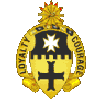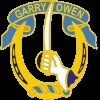| |
|
Operation Paul Revere II
August 01 - 15, 1966
1st & 2nd Battalions Company A, 1st Battalion
5th Cavalry 7th Cavalry
5th Cavalry 7th Cavalry


1st Cavalry Division (Airmobile)



|
Operation PAUL REVERE II - The 3rd Brigade, 25th Infantry Division had a continuing mission, beginning in May 1966, to interdict infiltration and supply routes in the Pleiku and Kontum Provinces. As the 1st Cavalry was moving west during Operation HENRY CLAY, intelligence sources indicated a significant enemy build up in this area during the period 10-26 July. Reports reflected the possibility of a repeat of the circumstances during the early stages of the PLEIKU CAMPAIGN; that is, a diversionary attack on a fortified area, with the enemy in position to ambush relief forces on a highway or at likely Landing Zones (LZs). In particular, II Corps intelligence estimated that the 32nd, 33rd, and 66th North Vietnamese Army (NVA) regiments were still in the area and planned to attack Civilian Irregular Defense Group (CIDG) camps at Duc Co, Plei Me, and also the city of Pleiku. Using strategy on a grand scale, the Communist Invaders hoped that these attacks would draw major U. S. Forces away from Tuy Hoa and the eastern coast, thereby enabling the Viet Cong to secure the rice harvest in that area at that time of year.
By August 2, sufficient forces had been committed for PAUL REVERE II so that General Norton was given control of the Area of Operations (AO). The operation followed the now familiar pattern of extensive search and maneuver, interspersed with brief periods of intense contact. As already seen, the division had covered the AO extensively during the PLEIKU CAMPAIGN in October-November 1965, MATADOR 11-17 January, and in LINCOLN 25 March - 8 April. The division had a good idea of what to expect in both the enemy and terrain. It was the weather, however, that was unexpected and unusually severe. General Norton described it as some of the worst weather he had ever seen for airmobile operations. Only a few hours a day were available for lift and resupply and even during these periods, flying was hazardous. From 2 to 7 August, efforts centered on finding the enemy. The division knew he was in the area, but most of the sightings and contacts were of individuals and small groups. On August 8th however, A Company, 1st Battalion 7th Cavalry Regiment (A/1/7 Cav) came under heavy fire at LZ Juliet and withstood mass assaults by a reinforced battalion for several hours. An attempt to encircle the company was beaten back by heavy artillery and Tactical (TAC) Air Support. The company was reinforced by two companies of the 1/12 Cav which were diverted, in a classic example of flexibility, while in the air to conduct another assault several miles away. When the helicopters with the reinforcements appeared on the LZ, the enemy broke contact leaving 106 of their dead. He was pursued until contact was lost after dark. The United States paid a high price - 25 dead and 36 more wounded. The dead were:
The final major contact of the operation found the division once again at the Chu Pong Massif, this time at Hill 534, on the southern portion of the hill mass. On August 14, A/1/5 Cav encountered forces at least in battalion and possibly regimental strength as it pursued a group of VC on foot. While attempting to link up with Alpha Company 1/5 Cav, Bravo Company, 2/5 Cav also became engaged with a large enemy force likewise in prepared, bunkered positions. As the size of the fortification became known additional companies were committed until two battalions were positioned around the enemy. The fierce close-in fighting continued throughout the night and well into the morning of the 15th. By morning, a total of 138 NVA dead were counted on the slope of Hill 534. The 5th Cavalry Regiment also paid a high price at the battle on Hill 534. The dead were:
By 24 August, 1st Cavalry Division elements had begun movement of OASIS, the forward Division Command Post area, in preparation for return to Camp Radcliff. Within the next two days all units had closed into An Khe, and Operation PAUL REVERE II had terminated. Operation Paul Revere II was conducted in extremely dangerous weather, and great credit must be given to the division's aviators who braved very difficult flying conditions to accomplish their mission. PAUL REVERE II witnessed the heaviest commitment of the 8th Engineer Battalion in any single operation to that date. All of the battalion's resources and skills were fully required during this month-lomng operation to offset the effects of the prevailing rains of southwest monsoons. They did a superior job in keeping the roads in the area open as well as maintaining the respective airfields in operatonal condition. These two tasks alone required twenty-four hour attention. Artillery, as usual, played a major part in the operation, as over 100,000 rounds of various calibers were fired in support of the infantry. One innovation was the Air Force aerial supply of 6,100 artillery rounds for the 105mm/155mm howitzers and the 175mm gun. Particular credit must be given to the ability of the aircrews to find and hit the LZ. Because of the terrain involved, and the inherent lack of vehicles in an airmobile division, a wide dispersion in any airdrop would mean retrieving the cargo load and its packing material, in most cases by hand, round by round. The accuracy of the drops kept these extra efforts to a bare minimum. The enemy lost 861 dead to the allied forces during this operation and there were 83 NVA and 43 VC captured. The enemy had been stopped from a victory before the Vietnamese national elections on Septermber 11, 1966 and his defeat and withdrawal from the area deprived him of that victory and further degraded their image in the Pleiku Province. |
| Contact Us | Copyright© 1997-2014 www.VirtualWall.org, Ltd ®(TM) | Last update 03/08/2014 |